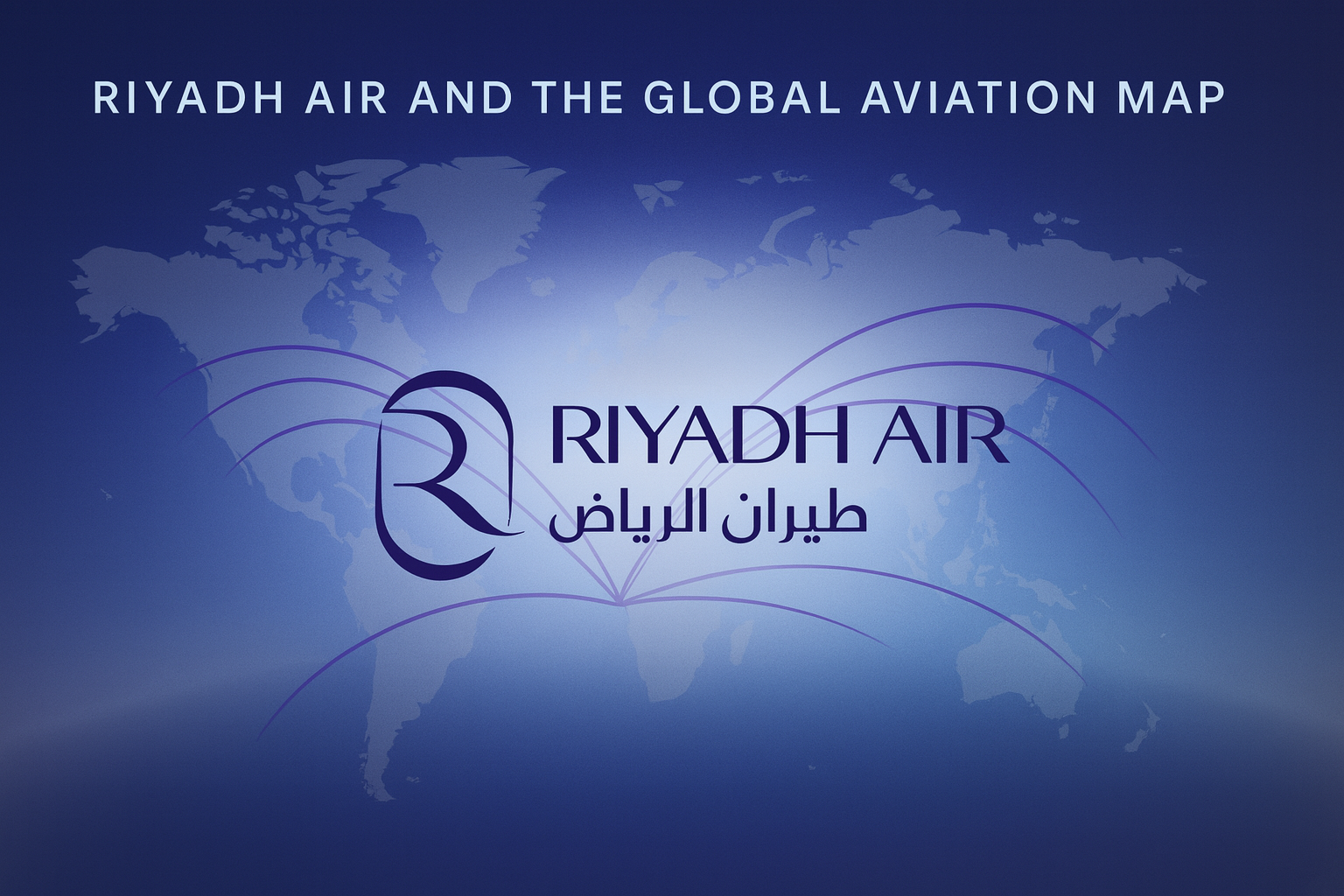
Riyadh Air and the Global Aviation Map
In 2025, it won't just be the skies that witness a new beginning—the entire Saudi economy will take flight with the official launch of the new national carrier, Riyadh Air.
This is not merely another airline added to the Kingdom’s aviation fleet; it is a strategic pillar and a pivotal tool for achieving one of Vision 2030’s most ambitious goals: transforming Saudi Arabia into a global aviation hub and one of the largest aviation economies in the region and the world.
This step did not come out of nowhere. It is the culmination of seven years of preparation and planning, during which the Kingdom has comprehensively developed its air transport and civil aviation system. Leadership recognized that achieving global leadership in aviation is an investment in logistical and economic infrastructure—an essential necessity to keep pace with the comprehensive developmental renaissance the country is undergoing. With the growth of international events and activities, increasing numbers of tourists and visitors, and expanding trade movements, the presence of a strong and flexible air carrier is no longer a luxury but a strategic imperative to ensure the smooth and efficient flow of passengers and goods to and from the Kingdom.
In a clear declaration of these ambitions, Riyadh Air-fully owned by the Public Investment Fund—announced last March its first fleet acquisition deal: an order for 72 Boeing 787-9 Dreamliner aircraft, divided into 39 confirmed orders and 33 under option. These technologically advanced wide-body aircraft will form the backbone of the new carrier’s fleet, designed to connect the world to the Kingdom and the Kingdom to the world.
Yet the nation’s ambition cannot be achieved in isolation. Building a global aviation hub requires the collaboration of all stakeholders. Thus, the deal is not limited to Riyadh Air alone but extends to other carriers operating in the Kingdom, with total expected orders reaching 121 aircraft of the same model. This massive investment will place the deal among the top five commercial aircraft orders in Boeing’s history by value-a strong message to the global market about Saudi Arabia’s serious entry into this industry.
This substantial investment is inseparable from the broader goals of Vision 2030. This aviation fleet will be the lifeline for welcoming over 100 million visitors and transporting more than 330 million passengers by 2030. These vast numbers are not just numerical targets; they are engines of economic growth that will create tremendous opportunities and open new horizons.
Riyadh Air alone is expected to contribute 75 billion Saudi Riyals to the non-oil GDP of the Kingdom, in addition to creating over 200,000 direct and indirect job opportunities.
The deal will also support the infrastructure sector by providing nearly 100,000 jobs in logistics and supporting industries, ensuring the construction of a solid foundation for a knowledge-based, advanced service economy.
To reinforce this role, the company’s management operations center will be located in the capital, Riyadh, further enhancing the city’s status as one of the world’s largest urban economies. Riyadh—home to some of the world’s most ambitious projects such as King Salman International Airport, Qiddiya, the Sports Boulevard, King Salman Park, Diriyah Gate, and the New Murabba-will find in Riyadh Air an aerial bridge connecting it to the world, transforming it into a major hub on the international aviation map.
In short, Riyadh Air is more than just an airline; it is a living embodiment of national ambition, an active tool for economic transformation, a lever for tourism and trade, and ultimately, a declaration of takeoff toward a brighter and more diversified future for Saudi Arabia.








